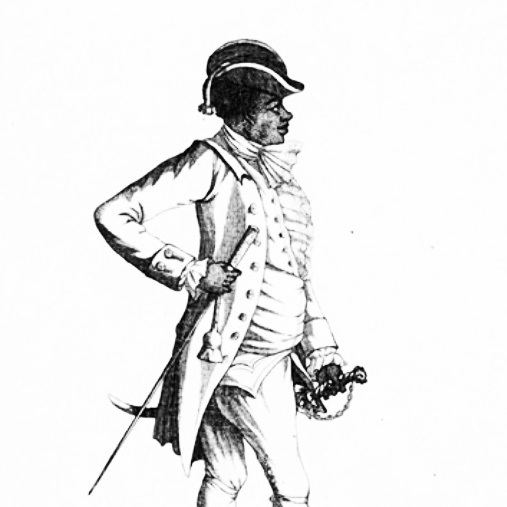Name Julius Soubise | Died August 25, 1798 | |
 | ||
Julius Soubise (1754 – 25 August 1798) was a freed Afro-Caribbean slave who became a well-known fop in 1760s/1770s Britain. He was one of the most prominent black persons in Britain at the time.

Biography

Soubise was born on St. Kitts in the Caribbean, the son of a Jamaican slave. He was bought by Royal Navy Captain Stair Douglas and taken to England at the age of 10. In 1764, he was given to Catherine Douglas (née Hyde), Duchess of Queensbury, who was a celebrated eccentric and beauty. The Duchess gave Soubise a privileged life, treating him as if he were her own son – apparently with her husband Charles Douglas, 3rd Duke of Queensberry's blessing.
Trained by Domenico Angelo (whom Soubise also regularly accompanied as usher to Eton and Windsor), Soubise became the riding and fencing master to the Duchess. He became popular among young noblemen and he rose as a figure in upper-class social circles, becoming the member of many fashionable clubs. He was known as an amateur violinist, singer and actor – he was taught oration by the famous actor David Garrick, who befriended a number of black people. The personal favour and patronage of the Duchess allowed Soubise a lifestyle of womanising and fashion. He would sometimes style himself "Prince Ana-Ana-maboe" or "The Black Prince", and claim to be African royalty. It was rumoured that his relationship with the Duchess developed into a sexual one.
Soubise became socially prominent enough to be the likely or definite subject of several caricatures – William Austin's well-known satirical engraving, The Duchess of Queensbury and Soubise (published 1 May 1773, showing them engaged in a fencing match); and most notably, A Mungo Macaroni (published 10 September 1772), part of a famous 1771–73 satirical series of engravings depicting fashionable young men, published by Matthew and Mary Darly ("macaroni" was a contemporary name for a fashionable young man; "Mungo" was a name of an officious slave from the 1769 comic opera The Padlock by Isaac Bickerstaffe; the Darly engraving was based on a caricature drawn by Henry Angelo).
In the collected letters of the famous freed slave Ignatius Sancho, Letter XIIII dated 11 October 1771 is addressed to Soubise, whom Sancho encourages to consider his lucky position as an unusually privileged black person and so live a more seemly life.
However, on 15 July 1777, Soubise fled Britain for India. The Duchess died two days after his departure. In India, he founded a riding school in Calcutta, Bengal. Soubise died on 25 August 1798, from injuries sustained from falling off a horse.
Julius Soubise is featured in the short animation entitled The Swordsman of Trelawny.
